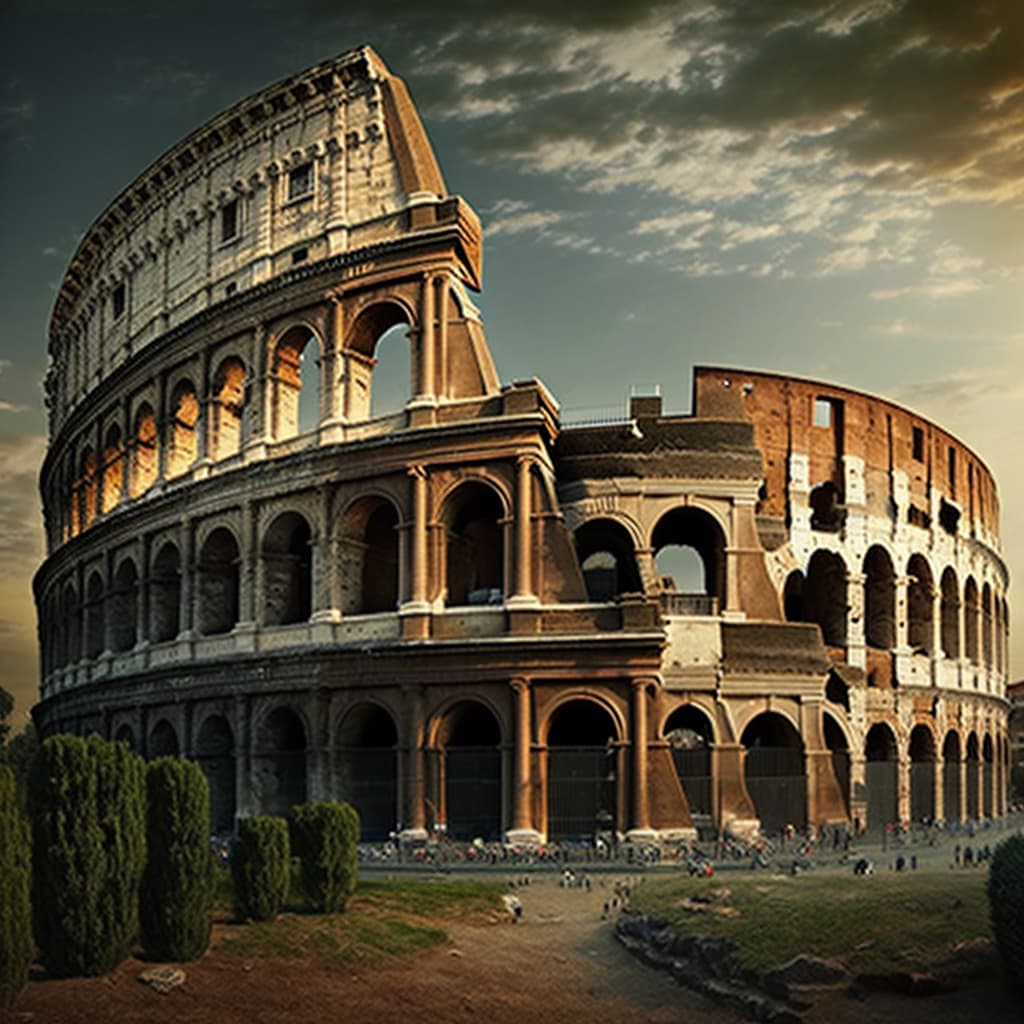AI generated content
This content is generated by an AI and does not reflect the opinions or views of individuals, either living or deceased.
| Text generated by | ChatGPT (GPT-3.5) |
| Text prompt | Write an article on how the Colosseum in Roma were built |
| Image generated by | Midjourney |
| Image prompt | The colosseum in rome |
The Engineering Marvel of the Colosseum in Rome

The Colosseum in Rome is one of the most iconic and recognizable ancient structures in the world. Built almost 2,000 years ago, the Colosseum remains a testament to the skill and ingenuity of the ancient Romans. In this article, we'll explore how the Colosseum was built and what makes it such a remarkable engineering feat.
Construction on the Colosseum began in 72 AD, under the rule of Emperor Vespasian. The structure was designed to hold public events, including gladiatorial contests, animal hunts, and public executions. It was completed in 80 AD, under the rule of Vespasian's son, Titus.
The Colosseum is a massive structure, standing 48 meters tall and measuring 188 meters long and 156 meters wide. It is estimated that it could hold up to 80,000 spectators, making it the largest amphitheater in the world.
The Colosseum was built using a combination of materials, including brick, tuff, and concrete. The outer walls were made of stone, with each block precisely cut and placed to fit together tightly. The interior of the Colosseum was constructed using a system of vaults and arches, which helped to distribute the weight of the structure evenly and provide support.
One of the most impressive aspects of the Colosseum's construction is its system of elevators and trapdoors. These were used to lift animals and gladiators into the arena, creating dramatic and thrilling entrances for the spectators. The elevators were powered by a series of pulleys and winches, and were operated by a team of slaves.
The Colosseum also featured a complex system of underground tunnels and chambers, which were used to store animals and gladiators before their entrance into the arena. These tunnels were also used to transport props and scenery for the public events held in the Colosseum.
Despite its impressive construction, the Colosseum has undergone significant damage and decay over the centuries. Today, much of the outer wall is missing, and many of the interior arches and vaults have collapsed. However, efforts are underway to preserve and restore the Colosseum, so that it may continue to inspire and awe visitors for centuries to come.
In conclusion, the Colosseum is a remarkable engineering feat that continues to capture the imagination of people around the world. Its use of advanced building techniques and innovative design has left a lasting legacy, and its significance as a cultural icon is undeniable. As we continue to learn more about the Colosseum's construction and history, we can appreciate even more the ingenuity and skill of the ancient Romans who built it.
